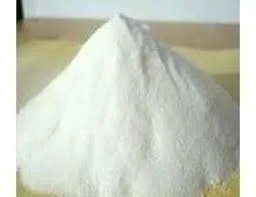
Jul . 21, 2024 01:51 Back to list
Exploring the Properties and Applications of Hydroxypropyl Methyl Cellulose in Modern Industries
Hydroxypropyl Methyl Cellulose Ether An Overview
Hydroxypropyl methyl cellulose ether (HPMC) is a synthesized polymer derived from cellulose, a natural polymer found in plant cell walls. As one of the most versatile and widely used cellulose ethers, HPMC finds applications across various industries, including pharmaceuticals, food, cosmetics, and construction.
Chemical Properties
HPMC is produced by the modification of cellulose through the addition of hydroxypropyl and methyl groups. This chemical alteration enhances the solubility of the cellulose in water, resulting in a product that can dissolve in cold water and form a viscous gel. The degree of substitution and the molecular weight of HPMC can significantly impact its properties, such as viscosity, gel strength, and solubility. This versatility allows for tailoring the characteristics of HPMC to meet specific application needs.
Applications in Pharmaceuticals
In the pharmaceutical industry, HPMC is commonly used as a binder, thickener, and film-forming agent in tablet formulations and controlled-release systems. Its ability to form gels and retain moisture makes it an ideal candidate for formulating extended-release medications. HPMC’s biocompatibility ensures that it is safe for human consumption, making it a preferred excipient for various drug delivery systems.
Moreover, HPMC is utilized in ophthalmic preparations, acting as a lubricant to relieve dry eye symptoms. Its hydrophilic nature allows it to retain water, providing a soothing effect while prolonging the residence time of the medication in the eye.
Role in Food Industry
hydroxypropyl methyl cellulose ether

In the food industry, HPMC serves multiple functions, including emulsification, thickening, and stabilization. Its usage as a food additive is recognized by regulatory bodies, and it is labeled as E464 in Europe. HPMC contributes to the texture and mouthfeel of food products, enhancing the overall sensory experience. Additionally, it acts as a fat replacer, allowing for lower-calorie alternatives without compromising texture and flavor.
HPMC is also employed in gluten-free products to improve dough handling and texture. By retaining moisture, it helps maintain softness and elasticity, making it a valuable ingredient for those following gluten-free diets.
Cosmetic Applications
In the realm of cosmetics, HPMC is cherished for its thickening and emulsifying properties. It is often found in creams, lotions, gels, and shampoos. It helps stabilize formulations, enhance the viscosity, and provide a pleasant feel on the skin. HPMC is also frequently used in hair care products due to its ability to improve the texture and shine of hair while reducing frizz.
Construction Industry
HPMC has carved a niche in the construction industry, where it is incorporated into various building materials such as mortars, plaster, and tile adhesives. It imparts improved workability, water retention, and adhesion properties to these materials. When added to cement-based products, HPMC enhances the life span of the mix and aids in achieving the desired consistency and application properties.
Conclusion
Hydroxypropyl methyl cellulose ether is a multifaceted polymer that plays a significant role across diverse industries. Its unique properties, such as solubility in cold water, thickening ability, and biocompatibility, make it an essential ingredient in pharmaceuticals, food, cosmetics, and construction. As the demand for sustainable and versatile additives continues to grow, HPMC will likely maintain its crucial position in these industries, further exemplifying the benefits of natural-derived compounds in modern applications.
-
Unlocking the Benefits of HPMC Products: A Gateway to Versatile Applications
NewsAug.07,2025
-
Unleashing the Potential of HPMC Ashland: A Comprehensive Look
NewsAug.07,2025
-
Tile Bonding Cellulose: The Key to Superior Adhesion and Durability
NewsAug.07,2025
-
Hydroxypropyl Methylcellulose Powder: The Versatile Component in Modern Pharmaceuticals
NewsAug.07,2025
-
Hydroxyethyl Cellulose: The Versatile Solution for Various Industries
NewsAug.07,2025
-
Hydroxyethyl Cellulose (HEC): The Versatile Polymer for Various Applications
NewsAug.07,2025







